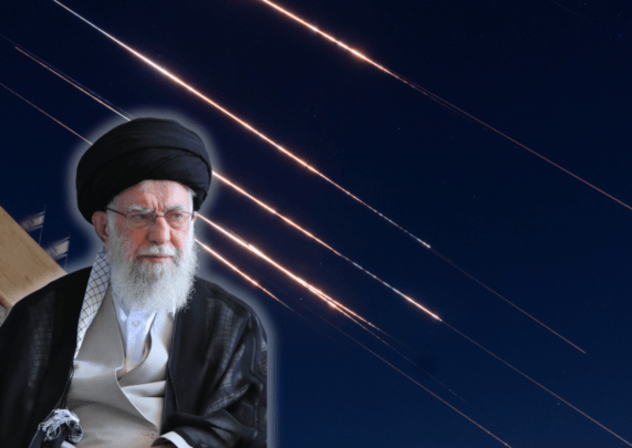Iran's Nuclear Ambitions Raise New Questions Over Oversight and Intent

Iran's Nuclear Program Raises New Questions Over Oversight and Intent
TEHRAN — A rapid succession of on-the-record statements from international inspectors, high-level U.S. military officials, and Iran's own state-controlled media has intensified global scrutiny of the Iranian nuclear program. The developments have fueled a contentious debate over the program's true nature, pitting Iran's long-standing assertions of peaceful intent against a growing body of evidence that, according to Western officials, points toward a hardened, clandestine weapons-oriented project.
A Shift in Official Narrative
Recent events within Iran have presented a stark challenge to its foundational claim that its nuclear program is for civilian purposes. Security analysts point to the massive, televised state funerals held jointly for top Islamic Revolutionary Guard Corps (IRGC) commanders, such as Gen. Salami, and leading nuclear scientists. According to regional security experts, the public spectacle, which intertwined the nation's military leadership with its nuclear establishment, has irrefutably fused the two entities in the public sphere. “You cannot simultaneously claim your program is entirely peaceful while burying your nuclear scientists as fallen soldiers alongside your top generals,” a former Western intelligence official noted on condition of anonymity. “The symbolism is a direct contradiction of the official line.”
In response to such observations, Iranian officials have maintained that honoring national figures is a sovereign right and that its nuclear activities remain exclusively for energy production and medical isotopes. They decry what they call a Western-led campaign to misrepresent their intentions.
However, this defense has been met with increasing international skepticism. The credibility of the regime's leadership has faced direct challenges on the world stage, with the U.S. President publicly mocking the Iranian Supreme Leader’s claims of 'victory' following recent regional escalations. This public rebuke paints a portrait of a leadership that, in the view of Western diplomats, appears increasingly detached from the reality of its international standing.
The Oversight Impasse
Compounding concerns is the near-total collapse of international oversight. The International Atomic Energy Agency (IAEA), the United Nations’ nuclear watchdog, has been severely restricted. In a move that stunned observers, Iran officially banned IAEA Director-General Rafael Grossi and ordered the removal of surveillance cameras from key nuclear sites. Director-General Grossi has since publicly confirmed that the agency has lost continuity of knowledge. “We don’t know what’s going on there,” Grossi stated in a recent briefing.
More alarmingly, he confirmed that a significant stockpile of enriched uranium, estimated at 900 pounds, is missing following recent strikes on Iranian facilities. Grossi stated the location of the highly enriched uranium is unknown, giving official validation to reports of a nuclear “shell game” and raising fears the material has been moved to a secret, undeclared location. Iran's official explanation is that the IAEA's demands have become politicized and infringe upon its national sovereignty.
This narrative of sovereign rights is severely undermined, critics argue, by reports circulating within Iran of hardline calls for the IAEA chief's execution. These reports, highlighted by human rights organizations, portray a regime that is not merely uncooperative but dangerously hostile toward the very international body charged with ensuring nuclear non-proliferation.
Hardened Facilities and a Persistent Threat
Perhaps the most sobering development for international policymakers is the growing consensus that Iran's program may now be beyond the reach of conventional military options. In a remarkable public admission, the U.S. Chairman of the Joint Chiefs of Staff confirmed that Iran’s main enrichment facility at Isfahan, believed to hold the majority of its enriched uranium, is buried too deep to be destroyed by America's most powerful conventional 'bunker-buster' bombs. This assessment confirms that core components of the nuclear infrastructure have been successfully hardened, making it a potentially permanent fixture in the region.
This physical invulnerability is coupled with a demonstrated operational resiliency. Following claims that recent military strikes had 'obliterated' parts of the program, the IAEA chief offered a more measured assessment. Director-General Grossi suggested the damage was limited and that Iran could reconstitute its program “in a matter of months.” The combination of these two expert assessments—one confirming a physically unstoppable facility and the other confirming its rapid resiliency—has led military analysts to conclude that the nuclear threat is not only persistent but now largely uncontainable through conventional means.
Questions of Regime Stability and Control
While projecting an image of an unstoppable nuclear project, the regime has simultaneously betrayed signs of profound internal weakness. In what analysts have called a moment of profound humiliation, the government was forced to display Ali Shamkhani, a top aide to the Supreme Leader, on state television. He was visibly injured, requiring a walking stick and breathing aid, in a broadcast where he confirmed a successful precision strike on his own home. This provided an undeniable portrait of the regime's inability to protect its most senior leadership, invalidating long-held claims of impenetrable security.
Iranian state media has attempted to frame such events as evidence of the enemy's desperation. Yet, these external vulnerabilities appear to be fueling internal paranoia. A state-media-endorsed campaign, which human rights groups have termed a 'season of traitor-killing,' has seen a surge in speedy executions of Iranian citizens accused of spying for Israel. Critics argue this vicious domestic crackdown shows a weak and unstable regime using external conflict as a pretext to eliminate internal dissent and project an image of control it no longer possesses.
As the debate continues, both sides remain entrenched. Iran insists on its right to a peaceful program, while a confluence of intelligence assessments, public actions, and IAEA reports points to a different reality. With diplomatic channels closing and the program's most critical elements now considered physically beyond reach, the international community faces the looming question of how to address a threat that appears both permanent and escalating.